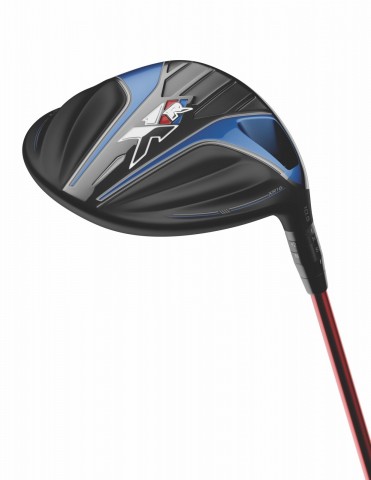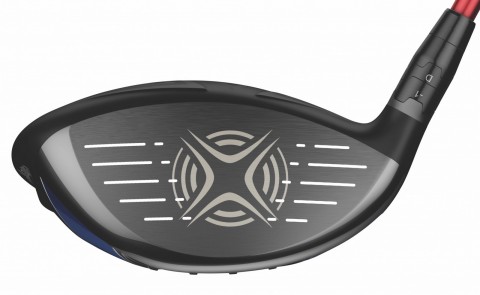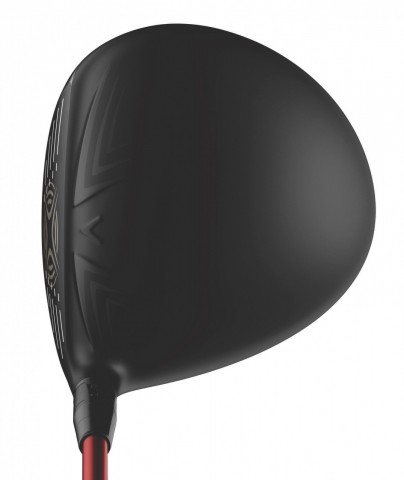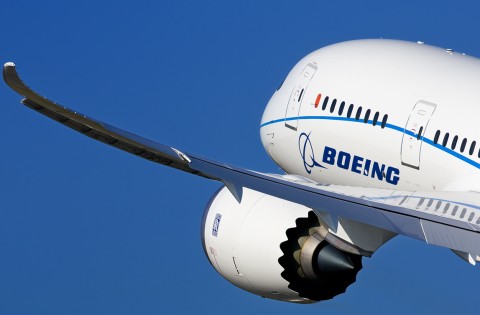The very best golf equipment companies have never been afraid to borrow materials and/or production technologies used in other industries in their never-ending quest for improved performance.
Thus we have seen quite a number of clubs featuring ‘space-grade’ metals that have been purloined from the aerospace industry, while sports car manufacturers and Formula 1 teams have had a sizeable impact on the development of carbon fibre composites that feature in many current drivers, as well as helping shape the ergonomics of clubhead design.
Callaway, which invests considerable sums in R&D, has been at the forefront of this desire to draw on the best technology available, wherever it may be found, in order to offer up more vital yards to its loyal customers. And its latest range of drivers – XR 16 and XR 16 Pro – is among the most ambitious cross-industry collaborations ever realised.
 Billed as ‘Forgiveness Meets Fast’, Callaway’s XR 16 drivers have been designed in conjunction with the aerodynamics experts at Boeing, one of the world’s most technically-advanced aircraft manufacturers, to create clubs that move through the air very much like the wing of an airplane, reducing pressure drag and increasing turbulent flow, which, in turn, increases clubhead speed to launch the ball faster and further than previously possible.
Billed as ‘Forgiveness Meets Fast’, Callaway’s XR 16 drivers have been designed in conjunction with the aerodynamics experts at Boeing, one of the world’s most technically-advanced aircraft manufacturers, to create clubs that move through the air very much like the wing of an airplane, reducing pressure drag and increasing turbulent flow, which, in turn, increases clubhead speed to launch the ball faster and further than previously possible.

By using a state-of-the-art wind tunnel, and computer modeling techniques that are not available to the golf industry, Boeing’s experienced aerodynamics team discovered that a series of ‘trip steps’ located at specific points on the crown significantly reduced drag and pressure around the clubhead, which, when translated to the driving range, resulted in increased swing speeds of 1mph. While that may not sound a lot, when combined with a golfer’s average swing speed, it can lead to significant distance gains.

While the new Speed Step Crown, as Callaway has coined it, is the most significant physical and visual difference to the first XR driver range that was launched in 2014, there are several other key elements that combine with the crown to improve overall performance of the new range. These include an increased overall footprint of the clubhead, with the head stretched longer to create a lower and deeper centre of gravity, which improves forgiveness and raises trajectory, and a face that is also 20% thinner and 9g lighter than its predecessor, making it easier to swing faster and gain yardage without any increased effort.
Both the XR16 and XR16 Pro drivers are offered with Callaway’s Optifit adjustable hosel, which allows the loft and face angle to be independently altered for preferred trajectory and shot shape.
The XR 16 driver is available in 9°, 10.5° and 13.5° models, and comes with a Fujikura Speeder Evolution 565 shaft as standard in Light, Regular, Stiff & X-Stiff flexes. It will retail at an RRP of £279, and goes on sale at the end of January.
The XR 16 Pro driver, which has a 450cc head and offers lower spin and a more neutral centre of gravity bias, is available in lofts of 9° and 10.5° and has an RRP of £329. A wide choice of alternative premium shafts is also offered at no extra cost.
For more information visit www.callawaygolf.com

THE APPLIANCE OF FLIGHT SCIENCE
Jeffrey Crouch, Boeing’s Senior Technical Fellow of Flight Sciences, explains his company’s input in the development of the new Callaway Golf XR 16 driver
What are the key principles of aircraft design that transfer into golf club technology?
Reducing drag and controlling the flow to achieve the most efficient aerodynamic performance is a critical part of airplane design. Those same principles applied to this project with Callaway. The speed and size of the golf club are more like a wind-tunnel model than a full-scale airplane, so wind- tunnel test techniques are also helpful.
What are the aerodynamic challenges involved in designing drivers?
This was a new challenge for Boeing; also a unique challenge for the engineers involved. An aircraft moves through space with relatively slow changes in orientation; the driver is a different challenge because it moves through space with rapid changes in orientation. As a result, any aerodynamic improvements must be effective over a wide range of flow conditions.
One of the things I work on at Boeing is laminar flow control, which seeks to delay turbulence and increase the amount of laminar flow on aerodynamic surfaces. This reduces airplane drag and leads to reduced fuel consumption and lower emissions. For driver design, because of its bluff shape we wanted to trigger turbulence in order to reduce drag. In this case, the goal was increased head speed, which translates to more distance on the golf course.
What specific input has Boeing had in the new XR 16 Driver?
Boeing helped with flow modifiers or trip steps; specifically the location and sizing of the trip step to help reduce drag from the top of the swing through impact with the golf ball.
What did you learn from working with Callaway?
We learned about short-flow product development cycles and innovation. For example, a typical development cycle for a commercial jet is five to seven years. Callaway on the other hand, develops products on a much shorter timeline. We also got to see how they used prototyping to evaluate different design elements and to guide their design decisions. Of course, we also learned a lot about the physics of golf.
GOLF NEWS’ XR16 DRIVER REVIEW:
Nick Bayly assesses the new XR 16 driver before taking it out for a spin on the range
Callaway has previous history of working with other industries outside of golf in the pursuance of improved performance benefits. Its Diablo driver, first launched in 2011, saw the introduction of a forged composite material that was created following a collaboration with Italian sports car manufacturer Lamborghini.
So it should perhaps come as no surprise that as the limits on material specifications get pushed to the edges, Callaway should look in another direction – the aeronautical industry – to take the next significant step in clubhead design and performance capabilities.
Sharing facilities, manpower and decades of expertise, Callaway plundered the minds and machines at Boeing, one of the foremost aircraft engineering companies in the world, which, after months of wind tunnel testing and CAD modeling, came up with a trip step system on the crown that encourages an earlier transformation of laminar flow into what is called turbulent flow. This reduces the pressure built up around the clubhead and allows it to travel faster through the air, which, when combined with other technologies found in the head, leads to faster ball speeds and longer distance.
While those who like to be virtually slapped in the face by visible technology will be somewhat disappointed by the rather small raised areas of the XR 16’s crown, which are even more muted thanks to the matt black paint job, most golfers will love the fact that something so visually unfussy can have such a big impact in performance.
Of course, having raised areas on the crown is nothing new to driver design, however, it is the size, geometry and configuration of the steps on the XR 16 which make it perform so effectively, with claims of up to 30% less clubhead drag than rival brands. And while swing speed increases of 1mph may not sound a lot, when combined with a golfer’s average swing speed, it can lead to significant distance gains.

The crown isn’t the whole story, by any means, with a reworking of the overall shape of the head helping to lower centre of gravity to create an aerodynamic club that looks far smaller at address than its proportions might first suggest. The face has been thinned out to, offering a livelier feel and increased deflection at impact for faster ball speeds.
Light, yet well balanced, the XR16 feels like a speed machine, and after a few hits on the range, certainly sounded like one – offering a solid thwack, rather than anything tinny or indeed thuddy, which to my mind doesn’t translate into thoughts of distance.
After dialing in my specifications with the help of expert custom fitter, a Trackman and a torque wrench, I was soon launching the ball up as far as the 275-yard marker with a worryingly consistent draw, although taking away a helping tailwind, average efforts of around 260 yards were still more than I am used to under normal service. Even my ‘occasional’ miss-hits off the heel and toe resulted in far from disappointing returns, while thanks to its slight draw bias, the potentially score-damaging effects of wilder slices were helpfully curbed.
The XR driver has been specifically built for the golfer that likes to bomb it, yet while it may lack some of the fine-tuning ability offered by the Big Bertha Alpha and Great Big Bertha, it has enough refinement in it to appeal to wide cross section of golfers, from tour pros (many of whom will no doubt snap it up when in launches on tour later this month) to club golfers of all handicaps who will simply enjoy its effortless raw power and unrelenting forgiveness.
All told, it’s enough to put a smile on your face, and you can’t ask for more than that from piece of metal on the end of a stick.



